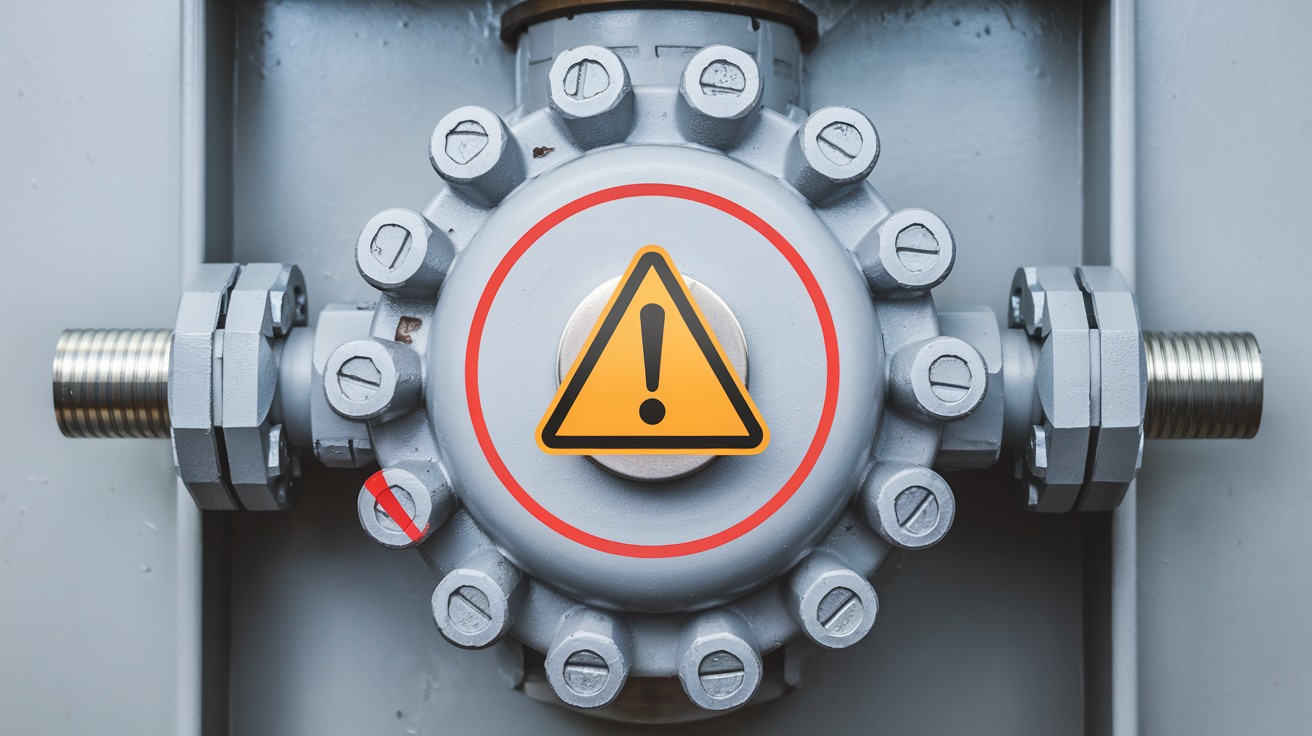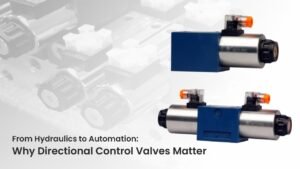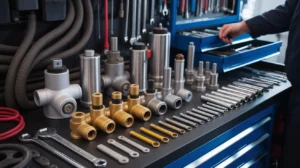Load sensing proportioning valves are important parts of hydraulic and braking systems, as they ensure that pressure is accurately distributed based on varying loads. These valves help maintain system stability and efficiency through precise hydraulic load control in heavy-duty vehicles, industrial machinery, or construction equipment.
However, when poorly adjusted or maintained, load sensing valves can malfunction. It can lead to reduced braking efficiency, uneven pressure distribution, or complete system failure when a load sensing proportioning valve adjustment is off. In this blog, we’ll explore the most common adjustment errors and how to identify and fix them before they cause costly downtime or damage.
Understanding Load Sensing Proportioning Valves
A load sensing proportioning valve adjusts hydraulic pressure in response to changes in load. This is especially critical in applications like commercial vehicles, where heavier loads require more braking force. In hydraulic systems, the valve fine-tunes flow and pressure, contributing to optimal hydraulic load control.
These valves usually consist of mechanical linkages, pressure sensors, and flow control mechanisms that work together to regulate output. When installed and adjusted correctly, these valves enhance performance, safety, and component longevity. However, misunderstanding their function can lead to improper load sensing proportioning valve adjustment, which compromises overall system effectiveness.
Common Issues With Load Sensing Valves
Let’s explore some of the most common problems that come up with a load sensing proportioning valve:
Uneven Pressure Distribution
Uneven pressure is one of the major reasons behind the imbalance of a hydraulic system. This often results from valve wear, misalignment, or incorrect LSPV adjustment. Moreover, it can seriously affect the hydraulic load control and system efficiency.
Inconsistent Performance
If a machine that behaves erratically might be dealing with flow regulation issues. Inconsistent performance is commonly caused by clogged valve ports or degraded hydraulic fluid, both of which impact LSPV function. Regular fluid maintenance helps prevent this.
Noisy Operation
Unusual or loud noises during operation are a signal of internal damage or pollution. A dirty or damaged load sensing valve can interrupt smooth hydraulic load control and can lead to performance loss.
How To Fix Your Load Sensing Valve
Now let’s take a look at how to troubleshoot a load sensing proportioning valve and keep the hydraulic load control system running smoothly:
Regular Maintenance
Regular checkups enhance the life of the hydraulic control system. Inspect the LSPV for leaks, clean out the dust, and monitor the hydraulic fluid level to prevent buildups and blockages.
Consult The Manual
When things sound unusual, then firstly, you should check the equipment manual. It provides valve-specific load sensing proportioning valve adjustment steps and tips to customize your system.
Seek Professional Help
Call in a hydraulic specialist if issues persist. A trained technician can perform detailed diagnostics and fine-tune the system for optimal hydraulic load control. This will save you time and costly errors.
Why Does Correct Adjustment Matter?
A properly adjusted load sensing valve ensures that braking and hydraulic power are distributed equally and efficiently based on real-time load conditions. An incorrect LSPV adjustment can throw the entire system off balance, leading to issues such as excessive pressure and light loads or insufficient force on heavier ones.
These problems not only reduce system responsiveness but also put extra pressure on different parts, which leads to premature wear or even failure. Moreover, correct adjustments also prevent overheating and ensure energy efficiency or fluid loss.
If your system feels unstable or noisy, the adjustment could be the root cause. A well-maintained valve helps maintain safety standards, reduce maintenance costs, and ensure smoother operations.
Conclusion
Proper load sensing proportioning valve adjustment is a key to achieving a reliable, responsive, and efficient hydraulic control system. Common errors such as inconsistent performance, noisy operations, and uneven pressure distribution can have a significant impact on performance and safety.
You can prevent many issues before they become serious by understanding how these valves work and following best practices in installation and maintenance. Proactive adjustments and regular maintenance make all the difference in heavy vehicles or complex industrial systems.
If you are looking for high-quality load sensing valves, then explore THM Huade’s trusted hydraulic solutions. Visit us today for hydraulic solutions that offer performance and ensure long-term reliability in every application.
Frequently Asked Questions
What does a load sense relief valve do?
The load sensing controller responds to an increase in load pressure by slightly increasing pump flow so that pressure upstream of the other opening increases. This keeps the pressure drop across the directional valve balance, which ensures constant flow.
What is the purpose of load-sensing valves?
The load sensing valve is used to automatically adjust the brake pressure and braking force according to the vehicle load.
How long does load sensing take?
Load sensing at the beginning of the cycle should not take more than 3 to 4 minutes.



